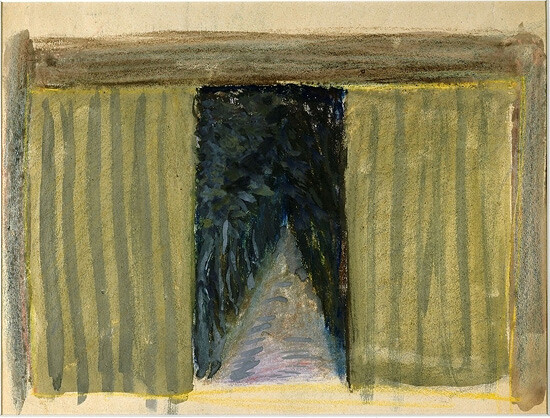There is something deeply disappointing about the contemporary moment: it projects the past into the future.
I recently met some emigrants from Germany. I am not talking about émigrés who left in the 1930s to escape National Socialism. The people I met quietly decided they could no longer put up with Germany’s endless, debilitating, and deeply racist debates on immigration, and left the country in which they had been born and lived most their lives. These so-called debates had been going on least since the early 1980s, when anti-Turkish graffiti started appearing in the streets. Fueled by the so-called reunification in 1989, racist riots became the norm throughout the 1990s. I still vividly recall the accounts of a television crew in Rostock trapped in the elevator of a burning hostel for Vietnamese guest workers that had been attacked by a fascist mob for days on end—to the great amusement of the police forces standing by.
All of these quite practical acts of violence were greatly supported and even applauded by elites, who took every opportunity to express doubts about ethnic minorities’ genetic makeup, inherited lack of intelligence, inbred fanaticism, and perceived failure to assimilate. We cannot neglect the fact that contemporary racism is eminently class-driven: it has its stronghold not in the working class, but in middle classes panicked by global competition, as well as in elites, who use the opportunity to deflect from growing social inequality by dangling the prospect of race-based subsidies for the working classes. Jacques Rancière’s recent refutation of the phantasm of an assumed working-class passion for racism is an extremely important tool of analysis here.1 Popular racist passion is seen as a primordially affective expression to be respected at any cost—and conveniently enables politicians to create racist policies to “acknowledge” them. But in effect, these passions are greatly exaggerated to allow room for middle and upper class racism to safely indulge itself, all the while remodeling the former First World as a defensive and resentful fortress. A bastille devastated from the inside by the delayed effects of shock capitalism, which have finally hit home.2


The German “debates” around immigration—of which the latest edition is just one minor and rather irrelevant example—haven’t changed much over time. The only change has been Germany’s switch to being a net emigration country after aggressively influencing Schengen policies to shut out migrants and refugees almost entirely. Recent hostility is thus directed against resident minorities, as there are hardly any more immigrants worth speaking of. While the country has been at the vanguard of post-1989 racist violence, it has recently been overtaken by other zealous candidates for mainstreamed hostility, such as Russia, with its recent, massive skinhead riots against minorities.
This is the disavowed legacy of 1989: a violent right-wing backlash, which not only threatens minorities but dismantles what remains of the public sphere—as well as the idea of society as such—by redistributing massive amounts of wealth from the poor to the rich, from the public sector to the private sector, from education, culture, and healthcare to subsidies for selected “capitalists” protected from market competition.
The extremely efficient cooperation between elites and mobs that kicked off after 1989 would become even more successful in the Austria of the new millennium, where the so-called Freedom Party (FPÖ) managed to enter a government coalition in an infamous tactical move by the conservative Austrian People’s Party (ÖVP). Since then, the extreme-right wing has happily poisoned the public sphere to an unbelievable extent, installing “special camps” for refugees and conjuring spirits of crusaders and Waffen-SS “camaraderie” to propagate their militantly racist agenda. And I am very consciously not talking about anti-foreigner policies, because these debates have never been about non-citizens, but have chronically targeted ethnic and cultural difference and indigenous minorities such as Austrian Slovenes and the Jewish community. None of the manifold revelations of the neo-fascist parties’ increasingly eccentric corruption scandals—hoarding bribe money in Swiss bank accounts, the multi-billion Euro crash of Hypo Alpe-Adria-Bank as part of the criminal privatization of former Yugoslavia, or the cash-filled bags gifted by Saddam Hussein to lubricate anti-Semite male bonding—have deterred any voters. Now led by an even more openly fascist new leader, the FPÖ still enjoys around 30 percent of votes, as a recent election in Vienna has shown. The infatuation with fascism among large parts of the population has not wavered. Were one to ask them to choose between wealth and racism, a substantial majority would go for racism.


Given the multitude of sobering situations, another definition of the contemporary has become urgent. We might take our cue from Giorgio Agamben, who has described the contemporary as a figure who intimately perceives the obscurity of the present:
The contemporary is the person who perceives the darkness of his time as something that concerns him, as something that never ceases to engage him. Darkness is something that more than any light turns directly and singularly toward him. The contemporary is the one whose eyes are struck by the beam of darkness that comes from his own time.3
In the French version, this last phrase is imbued with an additional meaning: Contemporain est celui qui reçoit en plein visage le faisceau de ténèbres qui provient de son temps.4 The French faisceau means “bundle,” and its Latin root fasces is also the origin of the word fascism. “Fascism” refers to the bundle of lictors, who were magisterial bodyguards in Roman times. This bundle became not only the symbol of Italian Fascists, but also of the French Republic. Le faisceau, the bundle symbolizing the power over life and death, is also the sign of the overlap between fascism and democracy. It is a beam that projects darkness, but there is no screen to mediate its impact. It’s right in our faces. The dark beam is the hallmark of a transition that is gradual and nonlinear rather than categorical and teleological—one we might cautiously term post-democratic.
Writer Boris Buden has compared this transition to the old philosophical problem of sophism.5 How many hairs does one have to lose to be considered bald? Or, in political terms: How much civility can the public sphere lose without lapsing into fascism? How much fear among minorities and how much radical neoliberal pauperization is permissible for societies to still qualify as democracies? To translate back to the language of sophism: Can ten remaining hairs still make a hairy head? Seven? Or even five? In other words: At what point do whole societies become skinheads? At what point does the politics of “more of the same” lapse into the militant call for more sameness?
See Jacques Rancière, “Racism: A Passion from Above,” at →.
This is also why resistance comes first from these devastated places.
Giorgio Agamben, “What Is the Contemporary,” in What Is an Apparatus? (Stanford: Meridian, 2009), 45.
Giorgio Agamben, “Qu’est-ce que le contemporain,” in Nudités (Paris: Payot et Rivages, 2009), 28. A close reading of this phrase with reference with its resonances to cinematic and video projection seems urgent as well, but cannot be accomplished within the scope of this text.
He forgot where it was published.


